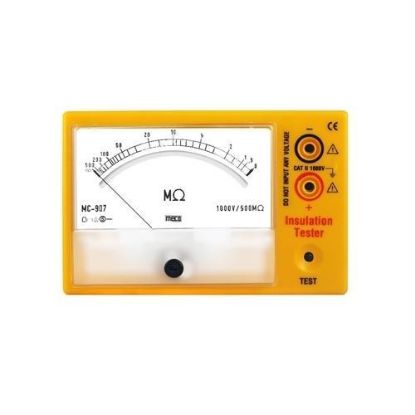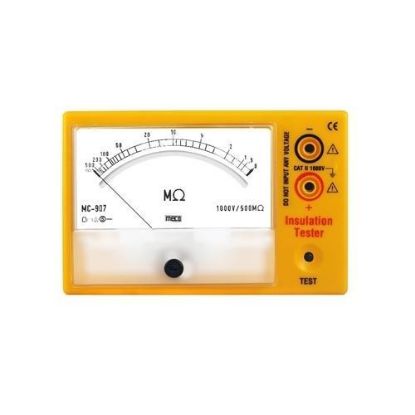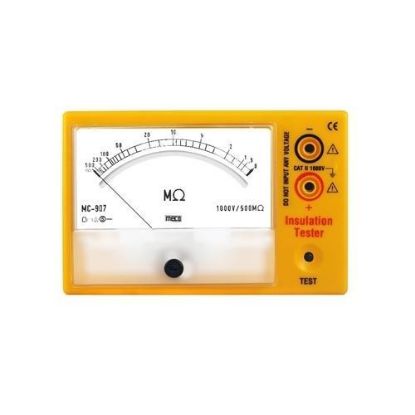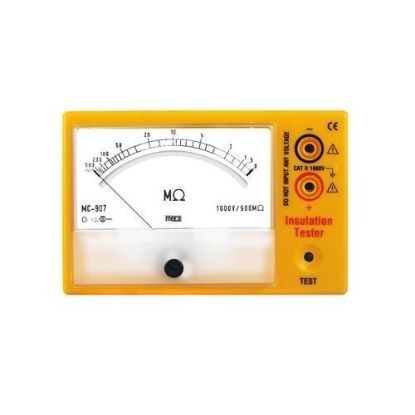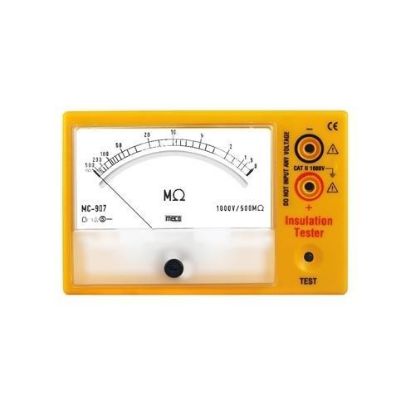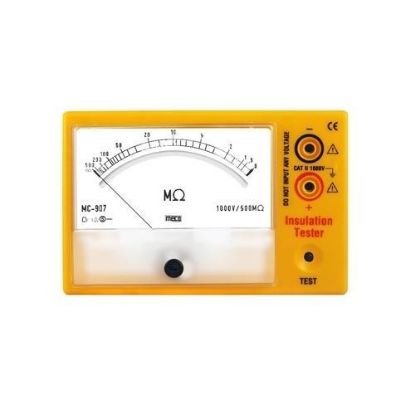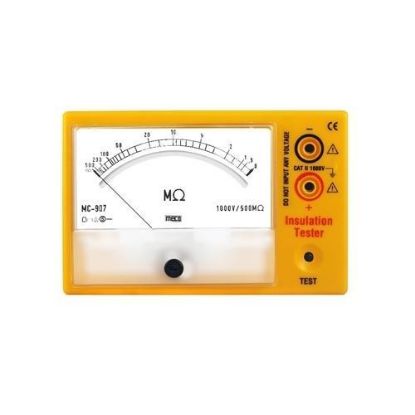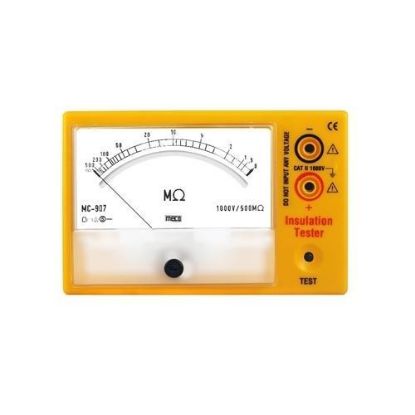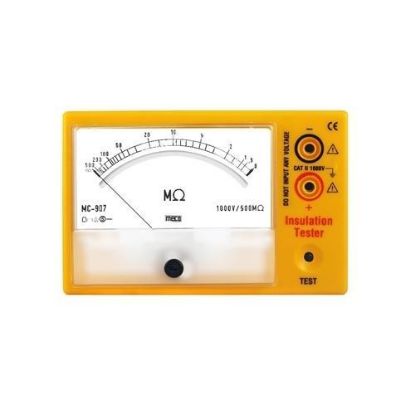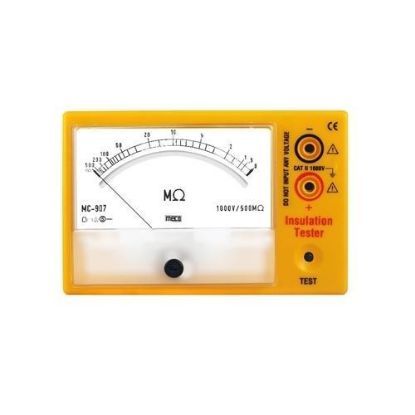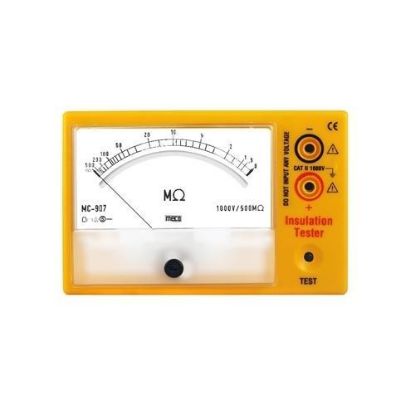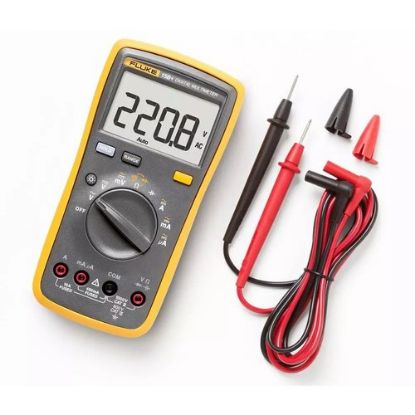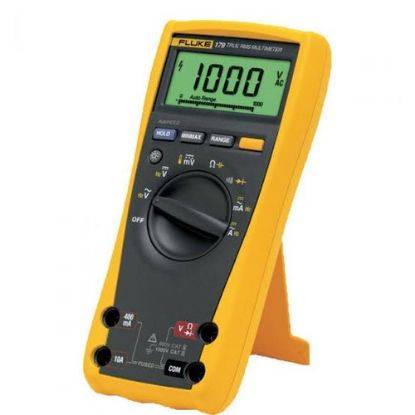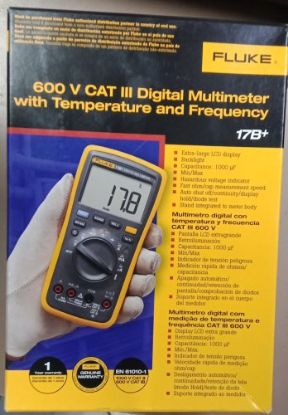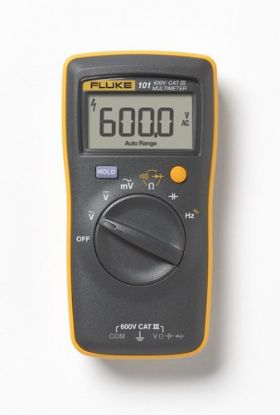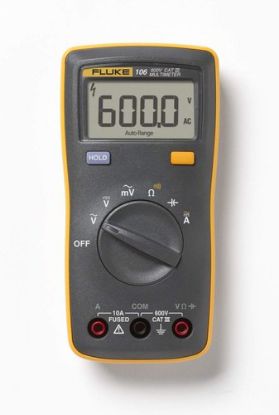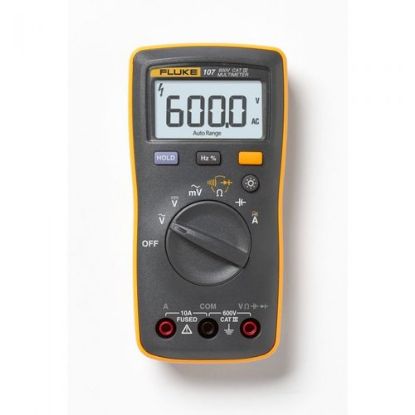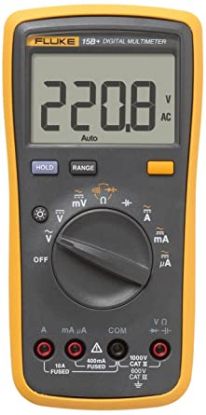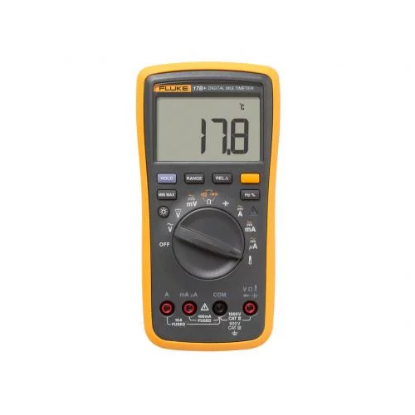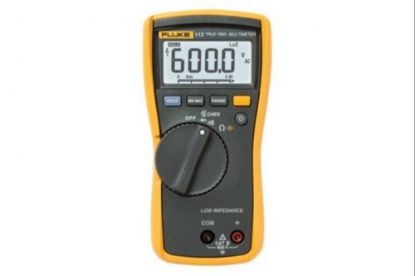Reachable at 9560662883  011-46039993 (Ext. 21 to 32) (10am - 06pm)
011-46039993 (Ext. 21 to 32) (10am - 06pm)
You have no items in your shopping cart.
Filter BY BRANDS
Test Devices and Instruments
Test Devices and Instruments
Insulation Tester Analog - Model:MC-901 , Test Voltage DC:100 v
A high voltage, low current DC charge is used by insulation testers to measure the resistance in wires and motor windings in order to find current leakage and defective or damaged insulation, which can result in arc faults, blown circuits, and the possibility of electrical shock or fire.
Insulation Tester Analog - Model:MC-901BA , Test Voltage DC:100 V
A high voltage, low current DC charge is used by insulation testers to measure the resistance in wires and motor windings in order to find current leakage and defective or damaged insulation, which can result in arc faults, blown circuits, and the possibility of electrical shock or fire.
Insulation Tester Analog - Model:MC-903BA , Test Voltage DC:500 v
A high voltage, low current DC charge is used by insulation testers to measure the resistance in wires and motor windings in order to find current leakage and defective or damaged insulation, which can result in arc faults, blown circuits, and the possibility of electrical shock or fire.
Insulation Tester Analog - Model:MC-904 , Test Voltage DC:500 V
A high voltage, low current DC charge is used by insulation testers to measure the resistance in wires and motor windings in order to find current leakage and defective or damaged insulation, which can result in arc faults, blown circuits, and the possibility of electrical shock or fire.
Insulation Tester Analog - Model:MC-904BA, Test Voltage DC:500 v
A high voltage, low current DC charge is used by insulation testers to measure the resistance in wires and motor windings in order to find current leakage and defective or damaged insulation, which can result in arc faults, blown circuits, and the possibility of electrical shock or fire.
Insulation Tester Analog - Model:MC-941 , Test Voltage DC:500 v
A high voltage, low current DC charge is used by insulation testers to measure the resistance in wires and motor windings in order to find current leakage and defective or damaged insulation, which can result in arc faults, blown circuits, and the possibility of electrical shock or fire.
Insulation Tester Analog - Model:MC-941BA , Test Voltage DC:500 v
A high voltage, low current DC charge is used by insulation testers to measure the resistance in wires and motor windings in order to find current leakage and defective or damaged insulation, which can result in arc faults, blown circuits, and the possibility of electrical shock or fire.
Insulation Tester Analog - Model:MC-906 , Test Voltage DC:1000 v
A high voltage, low current DC charge is used by insulation testers to measure the resistance in wires and motor windings in order to find current leakage and defective or damaged insulation, which can result in arc faults, blown circuits, and the possibility of electrical shock or fire.
Insulation Tester Analog - Model:MC-906BA , Test Voltage DC:1000 v
A high voltage, low current DC charge is used by insulation testers to measure the resistance in wires and motor windings in order to find current leakage and defective or damaged insulation, which can result in arc faults, blown circuits, and the possibility of electrical shock or fire.
Insulation Tester Analog - Model:MC-907 , Test Voltage DC:1000 V
A high voltage, low current DC charge is used by insulation testers to measure the resistance in wires and motor windings in order to find current leakage and defective or damaged insulation, which can result in arc faults, blown circuits, and the possibility of electrical shock or fire.
Insulation Tester Analog - Model:MC-907BA , Test Voltage DC:1000 V
A high voltage, low current DC charge is used by insulation testers to measure the resistance in wires and motor windings in order to find current leakage and defective or damaged insulation, which can result in arc faults, blown circuits, and the possibility of electrical shock or fire.
Digital Multimeter-DC Voltage:(Volt)600
Multiple electrical stimuli, including voltage, current, and resistance, are measured and verified by a digital multimeter, or DMM. It combines the functions of a voltmeter, ammeter, and ohmmeter and is used often by technicians and electrical engineers for diagnostic purposes.
Multimeter - Model Name:179 , DC Voltage Accuracy:+-(0.09% + 2
Multiple electrical stimuli, including voltage, current, and resistance, are measured and verified by a digital multimeter, or DMM. It combines the functions of a voltmeter, ammeter, and ohmmeter and is used often by technicians and electrical engineers for diagnostic purposes.
Multimeter- Model Name:17B+
Multiple electrical stimuli, including voltage, current, and resistance, are measured and verified by a digital multimeter, or DMM. It combines the functions of a voltmeter, ammeter, and ohmmeter and is used often by technicians and electrical engineers for diagnostic purposes.
Digital Multimeter-Model No.:101,Digit Display3 Digit
Multiple electrical stimuli, including voltage, current, and resistance, are measured and verified by a digital multimeter, or DMM. It combines the functions of a voltmeter, ammeter, and ohmmeter and is used often by technicians and electrical engineers for diagnostic purposes.
Digital Multimeter-Model No:106,DC Voltage (Volt):600
Multiple electrical stimuli, including voltage, current, and resistance, are measured and verified by a digital multimeter, or DMM. It combines the functions of a voltmeter, ammeter, and ohmmeter and is used often by technicians and electrical engineers for diagnostic purposes.
Digital Multimeter- Model No:107,DC Voltage (Volt):600
Multiple electrical stimuli, including voltage, current, and resistance, are measured and verified by a digital multimeter, or DMM. It combines the functions of a voltmeter, ammeter, and ohmmeter and is used often by technicians and electrical engineers for diagnostic purposes.
Digital Multimeter-Model Name:15B +,DC Voltage (Volt):600
Multiple electrical stimuli, including voltage, current, and resistance, are measured and verified by a digital multimeter, or DMM. It combines the functions of a voltmeter, ammeter, and ohmmeter and is used often by technicians and electrical engineers for diagnostic purposes.
Plus Digital Multimeter - Model Name:17B+
Multiple electrical stimuli, including voltage, current, and resistance, are measured and verified by a digital multimeter, or DMM. It combines the functions of a voltmeter, ammeter, and ohmmeter and is used often by technicians and electrical engineers for diagnostic purposes.
Digital Multimeter-Model Name:113,Digit Display:4 Digit
Multiple electrical stimuli, including voltage, current, and resistance, are measured and verified by a digital multimeter, or DMM. It combines the functions of a voltmeter, ammeter, and ohmmeter and is used often by technicians and electrical engineers for diagnostic purposes.

